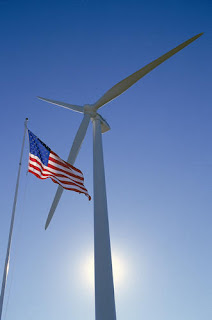During my internship last summer, I noticed a common trend
in the types of energy-saving techniques owners were requesting in commercial
buildings. Many of the structures were
designed to include LED lighting. LEDs
(light emitting diodes) have been around for many years, but high costs have
prevented them from being used in large applications. The most common places we used to see LEDs
were on small electronics and in flashlights.
As LED technology has grown over the years, production costs have
decreased while the bulbs have gotten much brighter.
LED lighting can last over twenty-five times as long as a
normal incandescent bulbs and use only a fraction of the energy. Therefore, many new buildings are designed to include LED
lighting for all, or at least some, of its lighting needs. While there still may be an additional cost
compared to incandescent bulbs and fixtures, these costs can quickly be
recouped by the low operating cost and due to the fact that LED bulbs rarely
need to be replaced.
While LED lighting has really taken off in commercial
projects, LED producers have had trouble entering the residential market due to
the initial extra cost and uninformed consumers. The term “LED” has certainly become a
household name recently, but the bulbs are only now starting to become
affordable and practical. Cree, one of
the top producers of LED components, has just released a bulb that they believe
will make the choice of switching to LED easy for residential buildings. The new bulb consumes 84% less energy than a traditional
bulb and can last for over 25,000 hours, which is about twenty-five times
longer than a standard bulb. As a recent
article in Green Building News (LINK) explains, “The LED bulb is dimmable, has no mercury, lasts longer
than a CFL bulb, turns on instantly and is energy efficient; it looks and
lights like an incandescent bulb and is definitely the future in lighting
technology.” These new bulbs clearly
outperform incandescent bulbs in many ways, but this still leave the issue of
price. The Cree bulbs cost anywhere from
9.97 to 13.97 depending on brightness, which is a dramatic drop in price
compared to previous options. Cree hopes
to give consumers a reason to switch that will actually be the best choice for
both the environment and their wallet, and a 10-year warranty should help make
the decision easy for those on the fence about making the switch.



